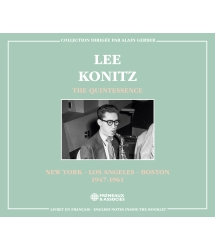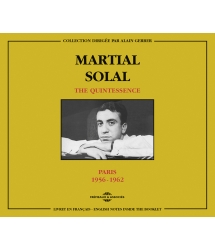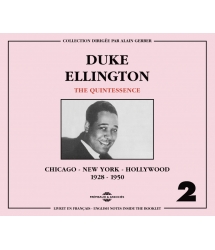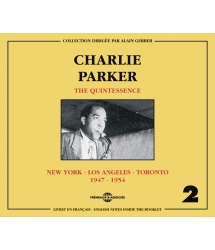- Our Catalog
- Philosophy
- Philosophers of the 20th century and today
- History of Philosophy (PUF)
- Counter-History and Brief Encyclopedia by Michel Onfray
- The philosophical work explained by Luc Ferry
- Ancient thought
- Thinkers of yesterday as seen by the philosophers of today
- Historical philosophical texts interpreted by great actors
- History
- Books (in French)
- Social science
- Historical words
- Audiobooks & Literature
- Our Catalog
- Jazz
- Blues
- Rock - Country - Cajun
- French song
- World music
- Africa
- France
- Québec / Canada
- Hawaï
- West Indies
- Caribbean
- Cuba & Afro-cubain
- Mexico
- South America
- Tango
- Brazil
- Tzigane / Gypsy
- Fado / Portugal
- Flamenco / Spain
- Yiddish / Israel
- China
- Tibet / Nepal
- Asia
- Indian Ocean / Madagascar
- Japan
- Indonesia
- Oceania
- India
- Bangladesh
- USSR / Communist songs
- World music / Miscellaneous
- Classical music
- Composers - Movie Soundtracks
- Sounds of nature
- Our Catalog
- Youth
- Philosophy
- News
- How to order ?
- Receive the catalog
- Manifesto
- Dictionnary











- Our Catalog
- Philosophy
- Philosophers of the 20th century and today
- History of Philosophy (PUF)
- Counter-History and Brief Encyclopedia by Michel Onfray
- The philosophical work explained by Luc Ferry
- Ancient thought
- Thinkers of yesterday as seen by the philosophers of today
- Historical philosophical texts interpreted by great actors
- History
- Books (in French)
- Social science
- Historical words
- Audiobooks & Literature
- Our Catalog
- Jazz
- Blues
- Rock - Country - Cajun
- French song
- World music
- Africa
- France
- Québec / Canada
- Hawaï
- West Indies
- Caribbean
- Cuba & Afro-cubain
- Mexico
- South America
- Tango
- Brazil
- Tzigane / Gypsy
- Fado / Portugal
- Flamenco / Spain
- Yiddish / Israel
- China
- Tibet / Nepal
- Asia
- Indian Ocean / Madagascar
- Japan
- Indonesia
- Oceania
- India
- Bangladesh
- USSR / Communist songs
- World music / Miscellaneous
- Classical music
- Composers - Movie Soundtracks
- Sounds of nature
- Our Catalog
- Youth
- Philosophy
- News
- How to order ?
- Receive the catalog
- Manifesto
- Dictionnary
19th OF APRIL 1960
NAT KING COLE
Ref.: FA5494
EAN : 3561302549422
Label : Frémeaux & Associés
Total duration of the pack : 1 hours 14 minutes
Nbre. CD : 1
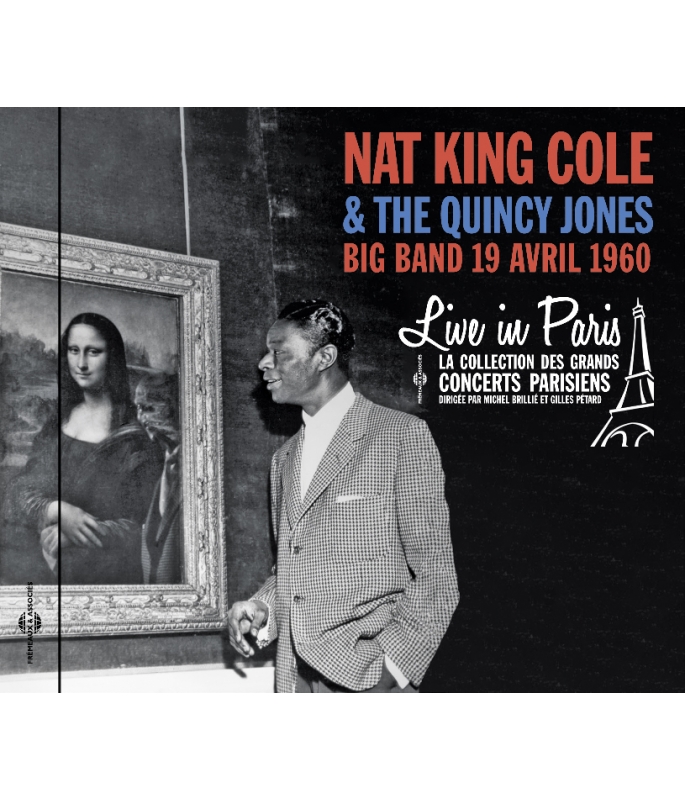
19th OF APRIL 1960
The Fifties saw a major turn in the career of Nat King Cole, who made his name as a jazz pianist before becoming one of the greatest crooners. Quincy Jones, still in his twenties, moved to Paris in 1959 and, with the help of Frank Ténot and Daniel Filipacchi, set up a big band which he led with swing and elegance (cf. the set “Quincy Jones Live in Paris”, FA5460, in this collection).
In 1960, the famous impresario Norman Granz set up a meeting between Nat & Quincy during the crooner’s European tour; Granz had been a fan of Cole since the beginning, and he knew there were purists in Europe, so he asked Cole to go back to the piano he’d abandoned a few years before and play some titles with a trio. Those titles contrast sharply with the big band pieces and leave room for some wonderful improvising. In fact, this whole recording illustrates a marvellous association between two men of jazz, both capable of creating fantastic hits, and both with a unique approach to great popular music.
Patrick FRÉMEAUX
The Live in Paris collection by Michel Brillié allows listeners to hear previously-unreleased recordings (made at concerts and private- or radio-sessions) by the great 20th stars in jazz, rock & roll and song. These “live” takes, and the artists’ rapport with their audiences, gives these performances an additional soul and sensibility in counterpoint to the rigorous demands of studio recordings. Particular care was taken when restoring the sound of these tapes in order to meet CD standards while preserving the original colours of the period.
Patrick FRÉMEAUX & Gilles PÉTARD
DIRECTION ARTISTIQUE : GILLES PÉTARD ET MICHEL BRILLIÉ
PRODUCTION / DROITS : BODY & SOUL.
DANCE BALLERINA DANCE [1ST CONCERT] • DARLING, JE VOUS AIME BEAUCOUP [1ST CONCERT] • THE CONTINENTAL [1ST CONCERT] • IT’S ONLY A PAPERMOON [1ST CONCERT] • SWEET LORRAINE [1ST CONCERT] • ROUTE 66 [1ST CONCERT] • WELCOME TO THE CLUB [1ST CONCERT] • JOE TURNER’S BLUES [1ST CONCERT] • TICKLE TOE [2ND CONCERT] • BLUES IN THE NIGHT [2ND CONCERT] • LESTER LEAPS IN [2ND CONCERT] • DANCE BALLERINA DANCE [2ND CONCERT] • DARLING, JE VOUS AIME BEAUCOUP • THE CONTINENTAL [2ND CONCERT] • IT’S ONLY A PAPERMOON [2ND CONCERT] • SWEET LORRAINE [2ND CONCERT] • ROUTE 66 [2ND CONCERT] • WELCME TO THE CLUB [2ND CONCERT] • JOE TURNER’S BLUES [2ND CONCERT] • THOU SWELL [2ND CONCERT].
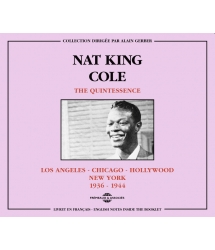
LOS ANGELES - CHICAGO - HOLLYWOOD - NEW-YORK 1936 -...
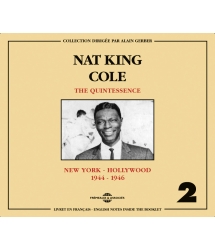
NEW-YORK - HOLLYWOOD 1944 - 1946
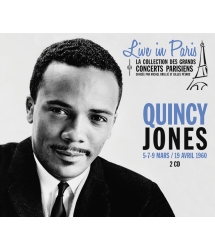
5-7-9 MARS / 19 AVRIL 1960



-
PisteTitleMain artistAutorDurationRegistered in
-
1Dance Ballerina DanceNat King ColeBob Russell00:02:111960
-
2Darling, je vous aime beaucoupNat King ColeAnna Sosenko00:03:031960
-
3The ContinentalNat King ColeHerbert Magidson00:03:381960
-
4It's Only a PapermoonNat King ColeE.Y. Harburg00:04:221960
-
5Sweet LorraineNat King ColeMitchell Parish00:05:471960
-
6Route 66Nat King ColeBobby Troup00:04:001960
-
7Welcome to the ClubNat King ColeNoel Sherman00:02:321960
-
8Joe Turner's BluesNat King ColeWalter Hirsch00:04:221960
-
9Tickle ToeNat King ColeJon Hendricks00:02:351960
-
10Blues in the NightNat King ColeJohnny Mercer00:04:281960
-
11Lester Leaps inNat King ColeLester Young00:04:091960
-
12Dance Ballerina DanceNat King ColeBob Russell00:02:101960
-
13Darling, je vous aime beaucoupNat King ColeAnna Sosenko00:03:071960
-
14The ContinentalNat King ColeHerbert Magidson00:03:351960
-
15It's Only a PapermoonNat King ColeE.Y. Harburg00:05:421960
-
16Sweet LorraineNat King ColeMitchell Parish00:05:361960
-
17Route 66Nat King ColeBobby Troup00:04:261960
-
18Welcome to the ClubNat King ColeNoel Sherman00:02:391960
-
19Joe Turner's BluesNat King ColeWalter Hirsch00:04:371960
-
20Thou SwellNat King ColeLorenz Hart00:01:561960
Nat King Cole - QJ FA5494
NAT KING COLE
& THE QUINCY JONES
BIG BAND 19 AVRIL 1960
Live in Paris
La collection des grands
concerts parisiens
Dirigée par Michel Brillié et Gilles Pétard
Nat King Cole & The Quincy Jones Big Band
Live in Paris
19 avril 1960
Par Michel Brillié
« Quincy, rappelle tes gars et rejouez quelques morceaux sans moi… »
C’est un Nat King Cole dépité qui murmure ces mots à l’oreille du jeune Quincy Jones. La scène se passe à Zurich, pendant leur tournée européenne du printemps 1960, où le grand orchestre de Quincy accompagne Nat Cole. Le « monarque mélancolique » comme l’a surnommé le magazine Look, vient de se faire huer par le public suisse de jazz fans purs et durs venus pour écouter l’un des maîtres du piano, l’égal d’Earl Hines et d’Art Tatum. A la place, ils ont découvert un crooner suave et romantique qui « reçoit journellement des centaines de lettres d’admiratrices impatientes de le voir chanter » (Jazz Magazine, mars 1960). L’incompréhension est totale et fait sortir de scène l’élégant chanteur. Quincy Jones, fan absolu du King Cole Trio des débuts, peut comprendre, et surtout sait réagir :
« Sauf ton respect, Nat, remonte sur scène et joue-leur Sweet Lorraine, juste au piano avec la rythmique. »
Cole regarde Quincy longuement, tourne les talons et remonte sur scène pour donner une interprétation « comme une bête » de Sweet Lorraine. Ayant renoué avec son public, le chanteur reprend ensuite son répertoire chanté et, cette fois, le public lui fait un triomphe. « C’était un très grand monsieur, bourré de talent, très intelligent, et avec l’oreille absolue pour couronner le tout », commente Quincy Jones, admiratif (Quincy, par Quincy Jones, Traduction Mimi et Isabelle Perrin, Robert Laffont, 2003).
« Le roi du double jeu » titre Jean Robert Masson pour son long article consacré au chanteur musicien dans Jazz Magazine du mois de mai 1960. Y a-t-il un homme, deux visages ? « Les fidèles de l’authentique pianiste de jazz, lassés par ces incursions dans la sphère des beaux sentiments susurrés, en viendraient à douter que Nat King Cole fut d’abord et demeure, malgré tout, un homme de jazz. Injustice ? Disons plutôt étonnement devant ces perpétuels et habiles changements de ton auxquels Cole le premier semble se complaire. » La réalité est sans doute plus simple, et plus pragmatique. Oui, le King Cole Trio des années quarante a produit l’une des musiques les plus excitantes et sophistiquées, subtiles, « un langage capable de retranscrire les nuances les plus fines et les idées musicales les plus complexes » (Nat King Cole, par Daniel Mark Epstein, G.K. Hall & Co, 1999). En même temps l’artiste, piètre homme d’affaires, a peu profité financièrement de son talent, se retrouvant criblé de dettes envers le fisc américain. D’où la confidence du King faite à Quincy Jones dans un bar à bières allemand, toujours pendant cette même tournée 1960 : « Je me rappelle du moment où je suis passé du statut de vedette à celui d’industrie. J’ai dû choisir : me griller en cinq ans après une ascension fulgurante, ou prendre le temps de construire un succès durable. »
C’est donc la star qui « chante pour l’Amérique » que le grand impresario Norman Granz sollicite pour cette tournée européenne de 1960. Ce n’est pas la première fois que Nathaniel Adams Coles vient en Europe. Il a déjà traversé l’Atlantique sur le paquebot Queen Mary en 1950, au moment de son sirupeux hit Mona Lisa. A Londres, au Palladium, les amateurs de jazz avaient été critiques de l’évolution commerciale du grand pianiste. Cela l’avait profondément marqué, et Nat était sorti de scène pratiquement en pleurs, selon le souvenir de Maria, son épouse.
Ce n’est pas non plus la première visite de Nat King Cole à Paris. Au printemps 1954, le chanteur repart en Europe, où il passe d’abord par Londres, et cette fois-ci il y est acclamé par le public et la presse anglaise. Puis il traverse le Channel pour se rendre à Paris et y donner son tout premier concert parisien au Palais de Chaillot. Il va en profiter bien sûr pour jouer au touriste et visiter les hauts lieux de la capitale, en (bonne) compagnie de la grande Lena Horne – et de son mari. Sa seconde femme Maria l’accompagne, comme elle le fait à chaque tournée ; Maria a compris, contrairement à Nadine, la première épouse de Cole, qu’il ne faut pas lâcher un homme de la trempe de Nat d’une semelle…
On va les voir ainsi caresser un mouton dans un célèbre restaurant parisien de l’époque, « Au mouton de Panurge », un établissement réputé pour ses repas pantagruéliques. Cela doit convenir à l’homme, connu pour son appétit pour les côtes de porc poêlées et les « Delicatessen ». Son penchant pour le pastrami et autres spécialités juives l’ont fait surnommer auprès de ses amis « Nat King Cohn »... En avril 1957, Cole va revenir une nouvelle fois à Paris, toujours au Palais de Chaillot. C’est le clarinettiste français Hubert Rostaing qui dirige l’orchestre.
Et en ce mois d’avril 1960, c’est au tour de Quincy Jones avec tout son Big Band de soutenir Nature Boy. L’association des deux musiciens est l’œuvre de Norman Granz, un ardent fan de King Cole. Dès 1942, Granz, alors à ses débuts, l’a produit lors d’une session mémorable avec Lester Young au sax ténor, Red Callender à la basse, et Nat Cole au piano. Deux ans plus tard, en juillet 1944, c’est encore Granz qui le fait participer au tout premier concert-jam session JATP, Jazz at the Philharmonic. En réunissant, entre autres, Jay Jay Johnson (trombone), Illinois Jacquet (ténor sax), Les Paul (guitare), et le pianiste sur la grande scène du Philharmonic Auditorium d’Hollywood, Californie, l’impresario réalise ainsi son grand rêve de donner un cadre digne aux jeunes jazzmen, tout en conservant l’esprit d’improvisation « jam-session » cher aux artistes.
Quand Granz lui propose cette tournée européenne, il est conscient du tournant commercial que Nat Cole a pris, même s’il le regrette. En préparant l’organisation, Granz demande quand même à Cole (qu’il paye 3.000 dollars par show) s’il peut prévoir un ou deux morceaux instrumentaux, juste au piano. Cole lui répond qu’il ne s’en sent pas vraiment l’envie… Dans le livre Norman Granz : The Man Who Used Jazz For Justice (par Tad Hershorn, University of California Press, 2011), le jazz-promoter conclut : « Peut-être qu’il appréciait toujours le jazz en privé, mais d’après moi, il avait abandonné l’idée de le jouer, et pour lui c’était la bonne décision. » Quincy Jones abonde dans le même sens : « Je ne suis pas dogmatique… Je crois que chacun a le droit d’exprimer ce qu’il désire. Lui c’était d’abord un pianiste, et puis un chanteur. Il a été le plus grand de tous, avec Sinatra. Et ainsi soit-il. Moi j’adorais écouter Nat chanter. »
En fait, c’est un peu le hasard qui va réunir « Q » et « King », ces deux énormes noms du jazz. Quincy est à Paris depuis janvier 1960 ; avec son Big Band, il a participé au fiasco de Free and Easy, une comédie musicale destinée à Broadway et venue se rôder à Paris. Quand le spectacle ferme au bout de trois semaines, Jones et sa troupe sont « sur le sable ». Plusieurs promoteurs de concerts vont venir à la rescousse en engageant l’orchestre ici ou là : Daniel Filipacchi, par exemple, et Norman Granz.
A l’Olympia, le Show de Nat King Cole ouvre ainsi avec le set de 40 minutes du Big Band au complet (Clark Terry, reparti aux USA, est remplacé par Roger Guérin). Puis après l’entracte, la section rythmique de Cole vient se substituer à celle de Quincy. Il y a les musiciens qui sont derrière le chanteur depuis plusieurs années : John Collins à la guitare, Charles Harris à la basse, et le petit frère de Lester, Lee Young, aux drums.
Auparavant, Nat King Cole s’est préparé avec soin, sous le regard de son valet personnel Sparky Tavares. Il s’est assis devant son miroir de maquillage et a passé sa chemise de smoking à jabot. Il a noué soigneusement son nœud papillon, prenant parfois dix minutes afin que ce soit parfait. Sparky lui a tendu des bas noirs maintenus par une jarretière, et ses chaussures vernies. Nat a grillé une ou deux cigarettes en bavardant en caleçon avec son valet. Dans cet intervalle de temps avant d’entrer en scène, peut-être se maudit-il, lui qui en fume plusieurs paquets, de ne pas pouvoir se libérer de cette boulimie tabagique qui le tuera cinq ans plus tard… Peut-être ses pensées vont-elles vers sa femme Maria, avec qui il vient de fêter le dixième anniversaire de son mariage, et avec laquelle il a adopté quelques mois auparavant un petit garçon, Kelly… Ou vers le candidat démocrate à l’élection présidentielle américaine, John Fitzgerald Kennedy : le jeune sénateur du Massachusetts, qu’il connait et apprécie depuis 1958, vient de lui envoyer un mot pour lui demander son soutien public. Plus probablement, Cole se projette deux semaines plus tard, pour ce qui va être le point d’orgue de sa tournée internationale : sa prestation au « Royal Command Performance Gala » à Londres, devant toute la famille royale, Elizabeth II en tête. Maria et Natalie, sa fille âgée de dix ans, seront là pour l’occasion, ainsi que pour le concert de Monte Carlo sous le regard brillant de la princesse Grace de Monaco.
Dans la loge de l’Olympia, le régisseur est venu le prévenir de la fin de l’entracte. Sparky lui a passé sa tenue de scène, son pantalon et sa veste en mohair, le smoking que sa femme Maria lui a fait spécialement faire chez Sy Devore, le tailleur des stars de Hollywood. Nat King Cole a déplié ses un mètre quatre-vingt cinq pour se diriger enfin vers la scène.
Pour la suite, pour exprimer ce qui se passait sur scène, ce charme indéfinissable de la megastar américaine, il n’y a pas mieux que ces mots splendides d’Alain Gerber : « Le roi était un seigneur : il pratiquait la fausse désinvolture, mais enseignait la vraie légèreté. Non pas celle qui rend inconsistant : celle qui rend aérien. Impalpable, il faisait semblant d’être volatil, soluble dans le courant du temps qui passe […] Il s’est évertué à sortir par une oreille, à peine était-il entré par l’autre, toujours sur la pointe des pieds – et c’est précisément pour cela qu’on ne peut plus se passer de lui ; « unforgettable » pour s’être voué à l’oubli. » (Unforgettable, par Alain Gerber, livret du coffret 2 Cds Nat King Cole, The Quintessence, Frémeaux & Associés, 1998)
Michel BRILLIÉ
© FRÉMEAUX & ASSOCIÉS 2015
Nat King Cole & The Quincy Jones Big Band
Live in Paris
April 19 1960
By Michel Brillié
“Quincy, call the cats back on and let the band play a few more tunes by themselves…”
It is a disappointed Nat King Cole who whispers these words in the ear of young Quincy Jones. The scene takes place in Zurich during the singer’s 1960 European spring tour, where Jones’ band is backing him. The “melancholy monarch”, as he has been called by Look Magazine, has just been booed by the hardcore Swiss jazz fans that came to hear the piano master, the peer to Earl Hines or Art Tatum. Instead, they discover a suave and romantic crooner, a man who “every day receives hundreds of letters from female admirers eager to see him perform live” (Jazz Magazine, March 1960). The Swiss audience obviously doesn’t care at all about his vocal talent and it drives the singer off stage. Now Quincy, as an absolute fan of the early King Cole Trio days can understand, and has the right reaction:
“With all due respect, Nat – go back out and try Sweet Lorraine. On piano, with just the rhythm section.”
Cole looks at Quincy for a while, then turns around, walks back onstage, and “plays the shit out of Sweet Lorraine”. This time the crowd appreciates it, after which the singer gets back to his sung repertoire, and tears up the audience. “He was one of the best who ever did it, a talented, highly intelligent man, with perfect pitch on top of it all” sums up the admiring Quincy Jones (Q : The Autobiography of Quincy Jones by Quincy Jones, Random House, 2001).
“The King of Double Play” is what Jean Robert Masson calls Nat King Cole in his article on the musician-singer in the May 1960 issueof Jazz Magazine. Is this a two-faced man? “The aficionados of the true jazz pianist are tired by his wanderings into the land of sweetly whispered
feelings, and maybe they are starting to doubt that Nat King Cole ever was at first and remains, in spite of it all, a jazzman. Is this unfair? Let us say we are puzzled by these clever and perpetual changes that Cole himself seems the first to enjoy.” Reality is perhaps simpler and more pragmatic. Yes, the King Cole Trio in the forties produced one the most exciting, sophisticated, subtle music, “a musical language capable of expressing the finest shades of feeling and the most complex ideas” (Nat King Cole, by Daniel Mark Epstein, G.K. Hall & Co, 1999). At the same time, the artist, not a very astute businessman, has benefited little from his talent, and has found himself owing large sums to the U.S. Internal Revenue Service. This explains what a pensive King confided to Quincy Jones in a German beer hall during the same 1960 European tour: “I remember the moment I stopped being just a pianist and a singing star and became an industry back home. I had to make a choice between moving up fast and burning out in five years, or taking my time and building it slowly so I make it for the long haul.”
Thus it is the “star that sings for America” whom Norman Granz, the great jazz agent, requests for the 1960 tour in Europe. It is not the first time that Nathaniel Adams Coles makes the trip. He has already sailed across the Atlantic on the Queen Mary once in 1950, at the time of his syrupy hit, Mona Lisa. At the London Palladium the jazz fans had been very critical of the commercial evolution of the great piano player. This affected him deeply, and Nat stepped off stage almost in tears, according to his wife Maria.
It’s also not the first time Nat King Cole pays a visit to Paris. In the spring of 1954, the singer travels a second time to Europe, stopping first in London, where he is at last celebrated by the English public and by the press. He then crosses the Channel to go to Paris and to perform for the very first time in the city at the Palais de Chaillot. Of course, Nat takes advantage of the opportunity to see the sights of the French capital, in the good company of the great Lena Horne – along with her husband. Maria, Nat’s second spouse, is by his side, as she is on each and every tour; Maria is fully aware, contrary to Nadine, Nat’s first wife, that it is best to keep a man such as Nat within eyesight…
In Paris, Nat and Maria are shown petting a sheep in front of “Le Mouton de Panurge”, a famed Parisian restaurant known for its gigantic meals. This must be to Nat’s liking, whose favorite dishes include pan fried pork chops and delicatessen. His yearn for pastrami and other Jewish specialties have brought him among his close friends the nickname of “Nat King Cohn”… In April 1957, Cole returns a second time to the French capital, to sing at the same place, the Palais de Chaillot. French clarinetist Hubert Rostaing leads the backing band.
On the month of April 1960, it is Quincy Jones’s turn to conduct his Big Band behind Nature Boy. This meeting of the two musicians is the work of Norman Granz, a great fan of King Cole. In 1942, Granz, then an up-and-coming jazz impresario, produced with Nat Cole a memorable recording session including tenor-sax Lester Young and bassist Red Callender. Two years later, in July 1944, it is Granz again who hires him to play at the very first J.A.T.P. (Jazz at the Philharmonic) concert-jam session. By getting together on the stage of the Philharmonic Auditorium in Hollywood, California, such artists as Jay Jay Johnson (trombone), Illinois Jacquet (tenor sax) Les Paul (guitar) along with the piano player, the agent fulfills his dream of staging jazz concerts in larger and more comfortable halls, where young artists would get the serious attention they deserved, while keeping the spirit of a improvised jam session.
When Granz contacts him for this European tour in 1960, he is fully aware of the commercial slant that Nat has taken, even if Granz regrets it. Getting ready for the tour, Granz asks Nat (whom he is paying $ 3,000 per show) if he would eventually play a couple of strictly instrumental numbers, just him at the piano. Cole replies that he really does not much care for playing anymore… In the book Norman Granz: The Man Who Used Jazz For Justice (by Tad Hershorn, University of California Press, 2011), the jazz promoter sums it up: “He may have privately liked to hear jazz, but from what I knew of Nat, I think he just gave up the idea, and for him it was the right decision.” Quincy Jones echoes this sentiment: “I’m not that dogmatic. I think a person has the right to express everything they want to. He was a piano player first and he was a singer. He was the greatest who ever lived along with Sinatra. So be it. I loved to hear Nat sing.”
There is in fact a small dose of chance involved in this reunion of “Q’” and “King”, those two mega names in jazz. Quincy had been in Paris since January 1960; together with his musicians, he was the regular band backing the Free and Easy musical. This show came to Paris to get ready for Broadway, and it flopped. When the musical folds after three weeks, Jones and his gang are stranded. Several concert promoters rush to help, among them Daniel Filipacchi, and Norman Granz.
At the Paris Olympia, the Nat King Cole Show opens with a forty minutes set by Jones’ full Big Band, with Roger Guérin standing in for Clark Terry who has returned to the U.S. After intermission, Cole’s rhythm section takes over Quincy’s. These are the musicians who have backed the singer for several years: John Collins on guitar, Charles Harris on bass, and Lester Young’s younger brother Lee on drums.
Prior to this, Nat King Cole has taken meticulous care in getting ready, under the scrutiny of Sparky Tavares, his private valet. He has sat down at his make-up mirror, put on his ruffled dress shirt, and tied carefully his bow tie. He has worked at his bow tie for ten minutes until it is perfect. Sparky has handed him his knee-length black socks with garters and his file-top shoes. Nat has sat smoking a cigarette or two, while conversing with his valet in boxer shorts. In this time lapse before show time, perhaps is he cursing himself, as he chain smokes several packs a day, not to be able to kick this deadly habit that will kill him five years later… Perhaps his thoughts wander off towards his wife Maria, with whom he has recently celebrated his tenth wedding anniversary, and adopted a little boy named Kelly a few months earlier… Or perhaps towards the new Democrat candidate for the Presidential Election, John Fitzgerald Kennedy, with whom he is acquainted and appreciates since 1958. The young senator from Massachusetts has just sent him a note asking for his official support.
More likely, Cole thinks ahead, for in two weeks it will be the highlight of his international tour: he will perform at the Royal Command Performance Gala in London, in front of Queen Elizabeth II and the full Royal Family. Maria and Natalie, his ten-year-old daughter, will fly in from the U.S. for the occasion, as they will be at the Monte Carlo concert under the sparkling eyes of princess Grace of Monaco.
In his dressing room at the Olympia Theater, the stage manager has come to warn him that the intermission is nearly over. Sparky has handed him his stage outfit, the mohair trousers and jacket. This tuxedo was custom-made to Maria’s specifications by Sy Devore, the tailor for Hollywood celebs. Finally, Nat King Cole unrolls his six feet one inch and walks towards the stage door.
To describe what follows on stage, to capture the indefinable charm of the American mega-star, there are no better words than those of Alain Gerber:
“King was a great lord. He practiced a mock casualness, but taught true lightness. Not inconsistency, but “aerialty”. He had the supreme elegance to assume a mantle of futility, to incarnate the superfluous, so that he might, within the space of a song, relieve us of our bodily weight and swathe us in the comforting illusion of insouciance. That is why we can’t do without him: “unforgettable” he was and will be forever, he who devoted himself to oblivion.”
(Unforgettable, by Alain Gerber, translated by Don Waterhouse, booklet for CD box: Nat King Cole, The Quintessence, Frémeaux & Associés, 1998)
Michel BRILLIÉ
© FRÉMEAUX & ASSOCIÉS 2015
1. Dance Ballerina Dance [1st Concert] (Bob Russell / Carl Sigman) 2’11
2. Darling, je vous aime beaucoup [1st Concert] (Anna Sosenko) 3’03
3. The Continental [1st Concert] (Herbert Magidson / Con Conrad) 3’38
4. It’s Only a Papermoon [1st Concert] (E. Y. Harburg / Billy Rose / Harold Arlen) 4’22
5. Sweet Lorraine [1st Concert] (Mitchell Parish / Cliff Burwell) 5’47
6. Route 66 [1st Concert] (Bobby Troup) 4’00
7. Welcome to the Club [1st Concert] (Noel Sherman/ Dick Wolf Noel) 2’32
8. Joe Turner’s Blues [1st Concert] (Walter Hirsch / W.C. Handy) 4’22
9. Tickle Toe [2nd Concert] (Jon Hendricks / Lester Young) 2’35
10. Blues in the Night [2nd Concert] (Johnny Mercer / Harold Arlen) 4’28
11. Lester Leaps in [2nd Concert] (Lester Young) 4’09
12. Dance Ballerina Dance [2nd Concert] (Bob Russell / Carl Sigman) 2’10
13. Darling, je vous aime beaucoup [2nd Concert] (Anna Sosenko) 3’07
14. The Continental [2nd Concert] (Herbert Magidson / Con Conrad) 3’35
15. It’s Only a Papermoon [2nd Concert] (E. Y. Harburg / Billy Rose / Harold Arlen) 5’42
16. Sweet Lorraine [2nd Concert] (Mitchell Parish / Cliff Burwell) 5’36
17. Route 66 [2nd Concert] (Bobby Troup) 4’26
18. Welcome to the Club [2nd Concert] (Noel Sherman / Dick Wolf) 2’39
19. Joe Turner’s Blues [2nd Concert] (Walter Hirsch / W.C. Handy) 4’37
20. Thou Swell [2nd Concert] (Lorentz Hart / Richard Rodgers) 1’56
Recorded by: Europe N°1 Technical Staff
Recording date
April 19, 1960
Recording place
Olympia Theater, Paris, France
Produced by: Daniel Filipacchi, Norman Granz & Frank Ténot
Personnel
Les Spann (Flute, Guitar), Julius Watkins (French Horn), Phil Woods (Saxophone),
Budd Johnson (Saxophone), Jerome Richardson (Saxophone), Porter Kilbert (Saxophone),
Sahib Shihab (Saxophone), Jimmy Cleveland (Trombone), Quentin Jackson (Trombone),
Melba Liston (Trombone), Ake Persson (Trombone), Roger Guérin (Trumpet),
Benny Bailey (Trumpet), Clyde Reasinger (Trumpet), Floyd Standifer (Trumpet),
Patti Bown (Piano: tracks 9 to 11), John Collins (Guitar: all tracks except 9 to 11),
Charles Harris (Bass: all tracks except 9 to 11), Buddy Catlett (Bass: tracks 9 to 11),
Lee Young (Drums: all tracks except 9 to 11), Joe Harris (Drums: tracks 9 to 11),
Nat King Cole (Piano, vocals: all tracks except 9 to 11)
Quincy Jones (Arranger, Bandleader)
String Quintet of Unidentified French Musicians (All tracks except 9 to 11)
Dedicated to Claude Boquet, Bill Dubois, Jean Claude, Philippe Moch and the gang
La collection Live in Paris:
Collection créée par Gilles Pétard pour Body & Soul et licenciée à Frémeaux & Associés
Direction artistique et discographie: Michel Brillié, Gilles Pétard
Coordination: Augustin Bondoux
Conception: Patrick Frémeaux, Claude Colombini
Fabrication et distribution: Frémeaux & Associés
La décennie 1950 voit le grand virement dans la carrière artistique de Nat King Cole, qui s’était fait connaitre comme pianiste de jazz avant de devenir le grand crooner intemporel. Quincy Jones, encore la vingtaine, s’installe à Paris en 1959 et monte, avec l’aide de Frank Ténot et Daniel Filipacchi, son propre big band qu’il conduit avec swing et élégance (voir le coffret « Quincy Jones Live in Paris » FA5460 dans cette collection). Norman Granz, le célèbre impresario, initie en 1960 la rencontre entre les deux hommes lors d’une tournée européenne du crooner. Fan de Cole depuis la première heure, il lui demande, à la faveur d’un public européen puriste, de prévoir quelques titres en trio et de reprendre le piano qu’il avait délaissé depuis quelques années. Ces titres viennent trancher avec les morceaux en big band et laissent place à de belles improvisations. Ce disque illustre la formidable collaboration entre deux hommes issus du jazz, formidables accoucheurs de tubes, qui ont tous deux eu une approche singulière et intemporelle de la grande variété. Patrick FRÉMEAUX
The Fifties saw a major turn in the career of Nat King Cole, who made his name as a jazz pianist before becoming one of the greatest crooners. Quincy Jones, still in his twenties, moved to Paris in 1959 and, with the help of Frank Ténot and Daniel Filipacchi, set up a big band which he led with swing and elegance (cf. the set “Quincy Jones Live in Paris”, FA5460, in this collection). In 1960, the famous impresario Norman Granz set up a meeting between Nat & Quincy during the crooner’s European tour; Granz had been a fan of Cole since the beginning, and he knew there were purists in Europe, so he asked Cole to go back to the piano he’d abandoned a few years before and play some titles with a trio. Those titles contrast sharply with the big band pieces and leave room for some wonderful improvising. In fact, this whole recording illustrates a marvellous association between two men of jazz, both capable of creating fantastic hits, and both with a unique approach to great popular music. Patrick FRÉMEAUX
La collection Live in Paris, dirigée par Michel Brillié, permet de retrouver des enregistrements inédits (concerts, sessions privées ou radiophoniques), des grandes vedettes du jazz, du rock & roll et de la chanson du XXe siècle. Ces prises de son live, et la relation avec le public, apportent un supplément d’âme et une sensibilité en contrepoint de la rigueur appliquée lors des enregistrements studios. Une importance singulière a été apportée à la restauration sonore des bandes, pour convenir aux standards CD tout en conservant la couleur d’époque. Patrick FRÉMEAUX & Gilles PÉTARD
The Live in Paris collection by Michel Brillié allows listeners to hear previously-unreleased recordings (made at concerts and private- or radio-sessions) by the great 20th stars in jazz, rock & roll and song. These “live” takes, and the artists’ rapport with their audiences, gives these performances an additional soul and sensibility in counterpoint to the rigorous demands of studio recordings. Particular care was taken when restoring the sound of these tapes in order to meet CD standards while preserving the original colours of the period. Patrick FRÉMEAUX & Gilles PÉTARD
NAT KING COLE & THE QUINCY JONES BIG BAND
1. Dance Ballerina Dance [1st Concert] 2’11
2. Darling, je vous aime beaucoup [1st Concert] 3’03
3. The Continental [1st Concert] 3’38
4. It’s Only a Papermoon [1st Concert] 4’22
5. Sweet Lorraine [1st Concert] 5’47
6. Route 66 [1st Concert] 4’00
7. Welcome to the Club [1st Concert] 2’32
8. Joe Turner’s Blues [1st Concert] 4’22
9. Tickle Toe [2nd Concert] 2’35
10. Blues in the Night [2nd Concert] 4’28
11. Lester Leaps in [2nd Concert] 4’09
12. Dance Ballerina Dance [2nd Concert] 2’10
13. Darling, je vous aime beaucoup 3’07
14. The Continental [2nd Concert] 3’35
15. It’s Only a Papermoon [2nd Concert] 5’42
16. Sweet Lorraine [2nd Concert] 5’36
17. Route 66 [2nd Concert] 4’26
18. Welcome to the Club [2nd Concert] 2’39
19. Joe Turner’s Blues [2nd Concert] 4’37
20. Thou Swell [2nd Concert] 1’56
